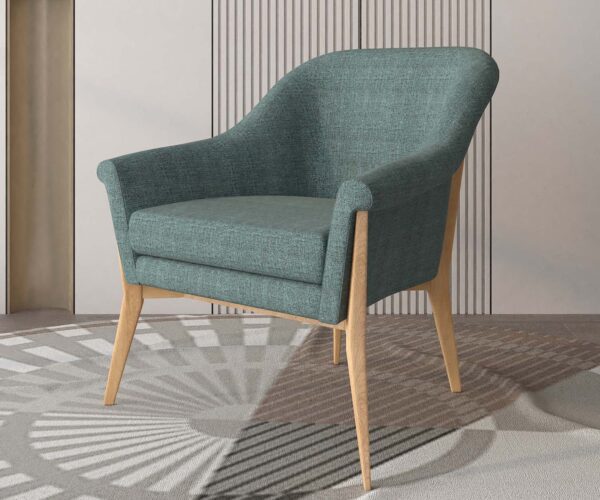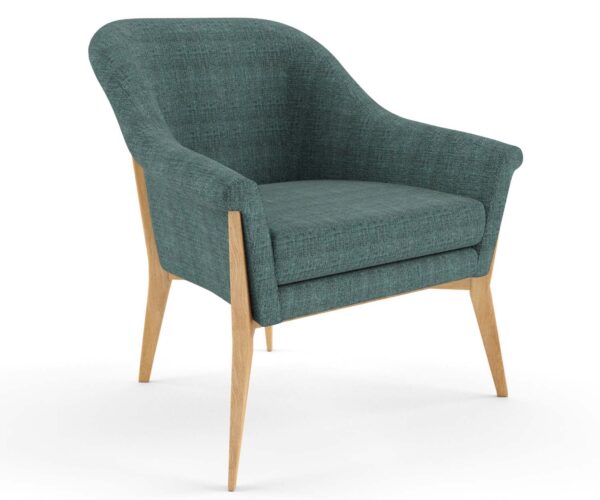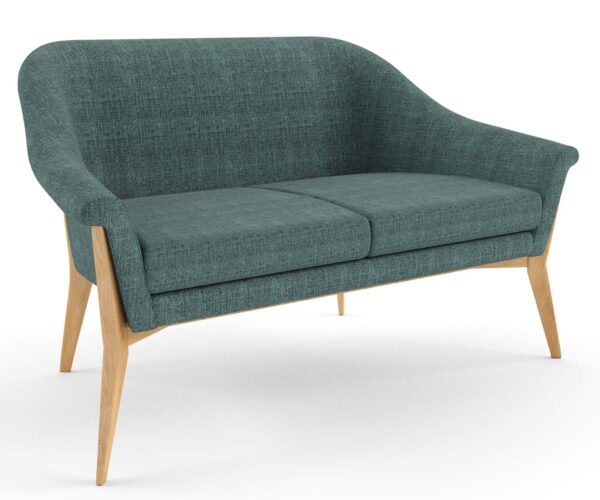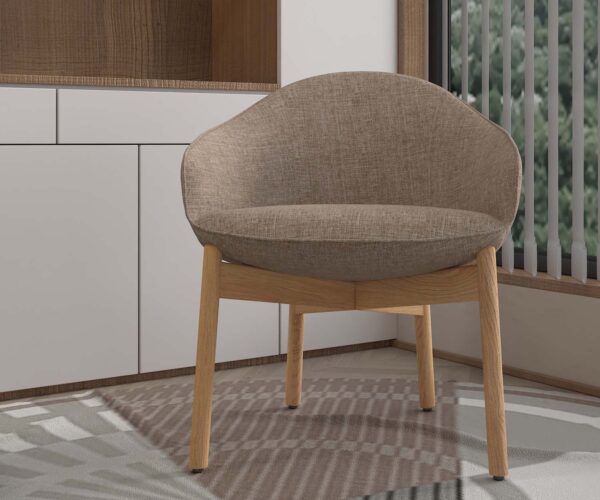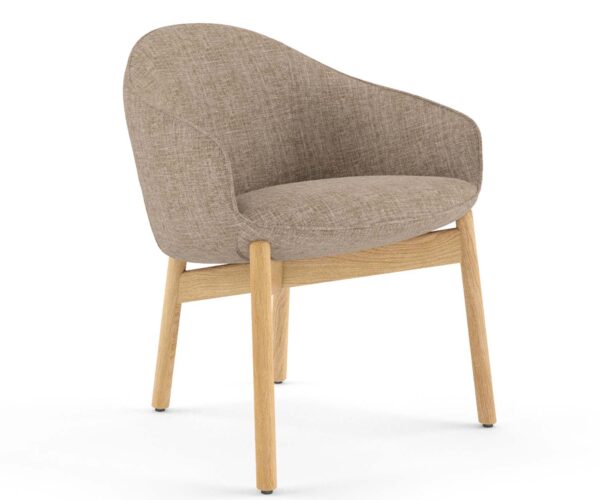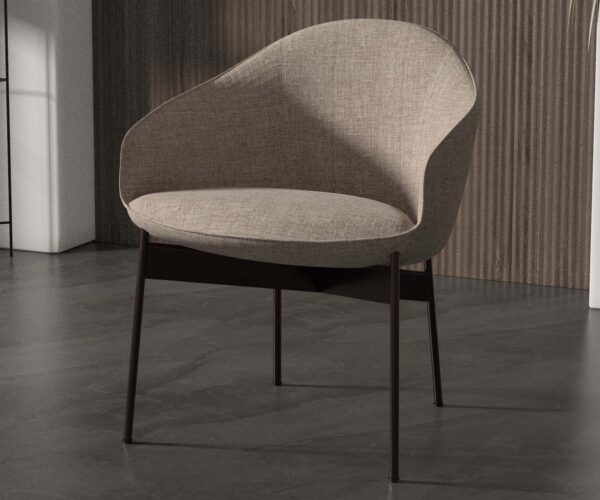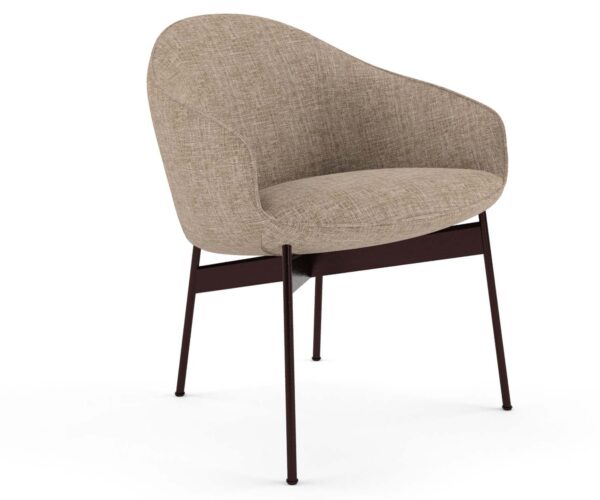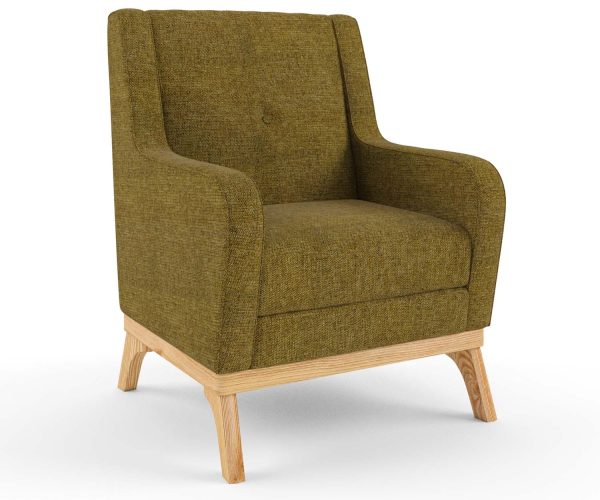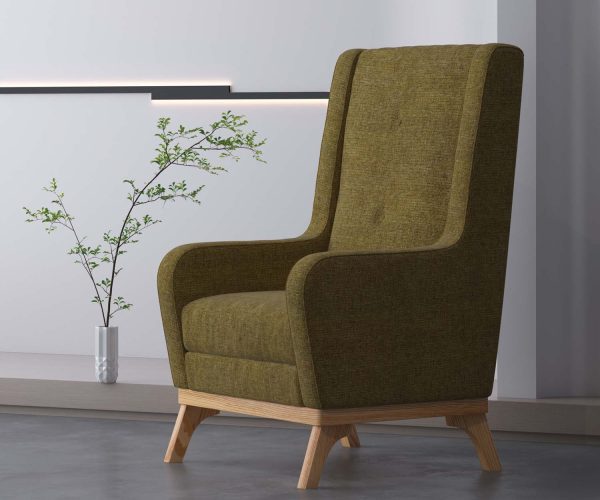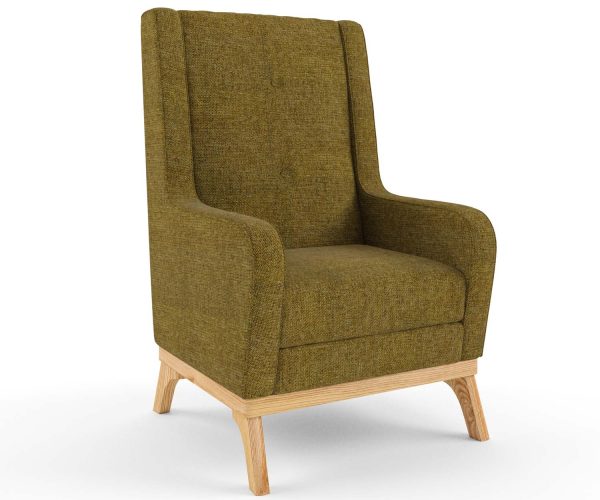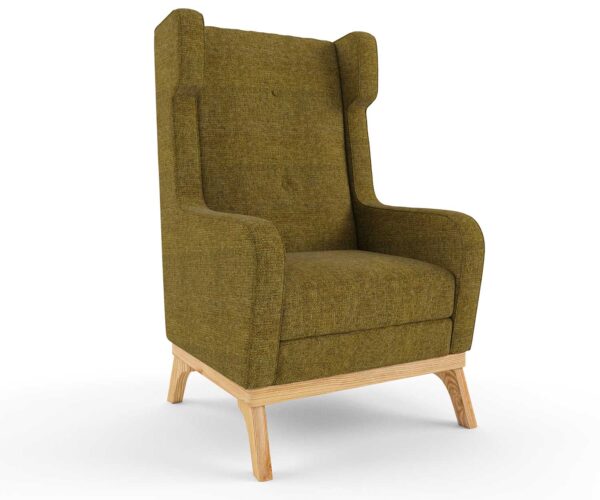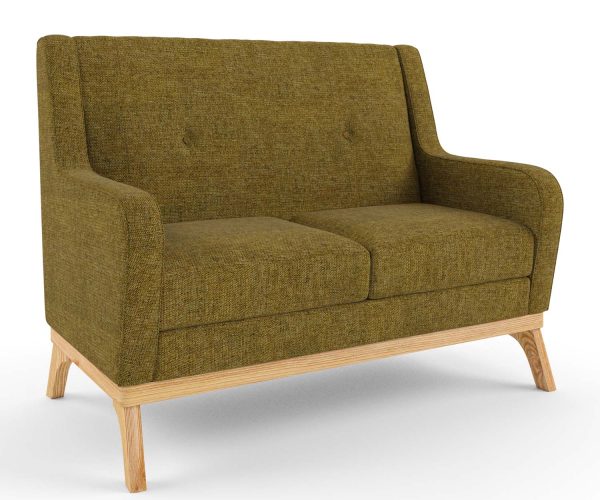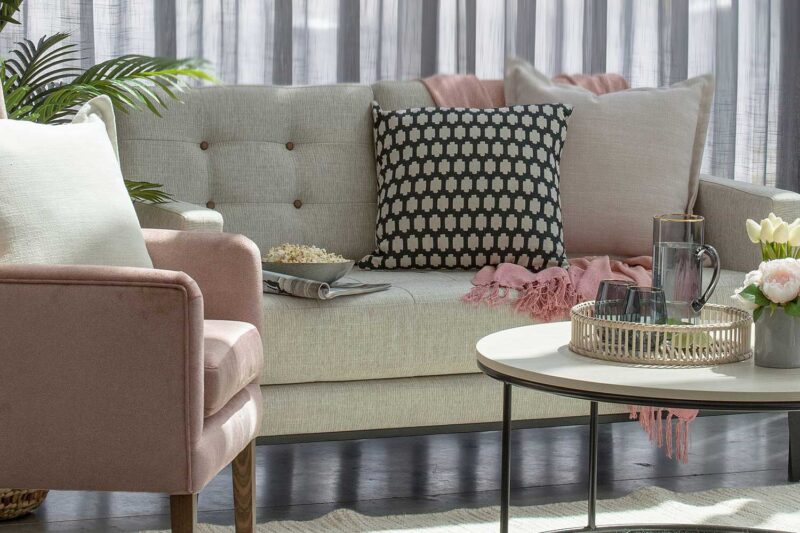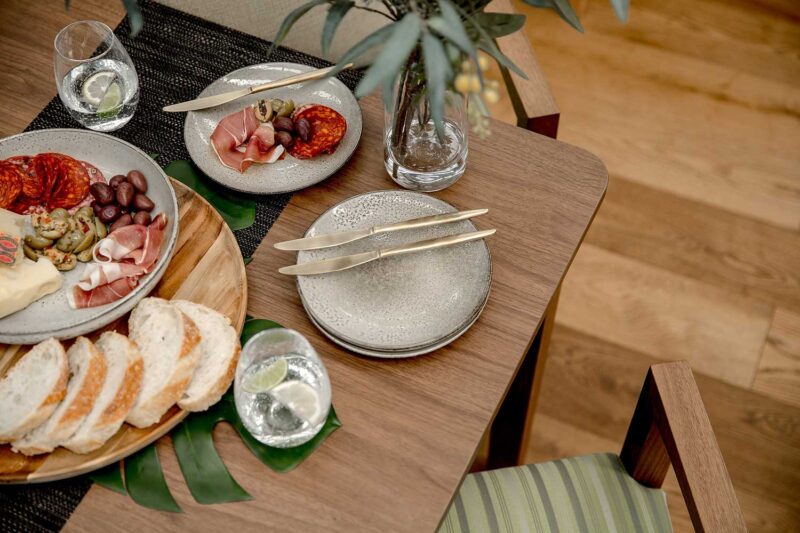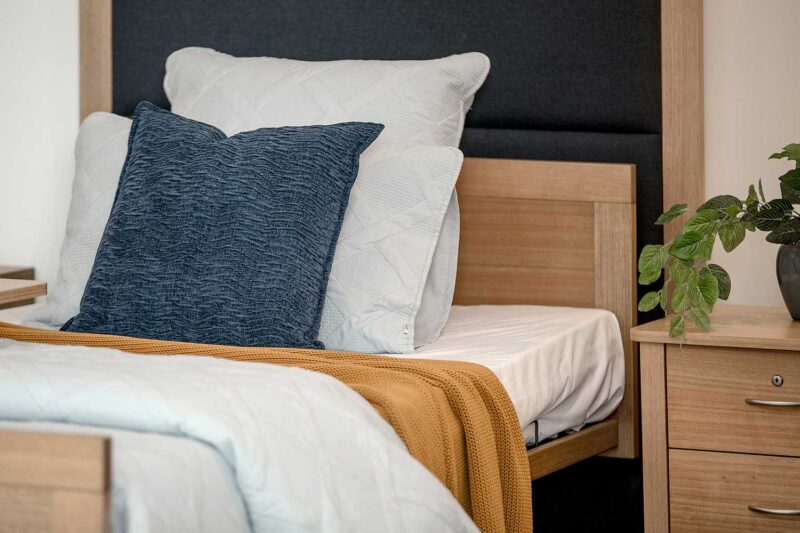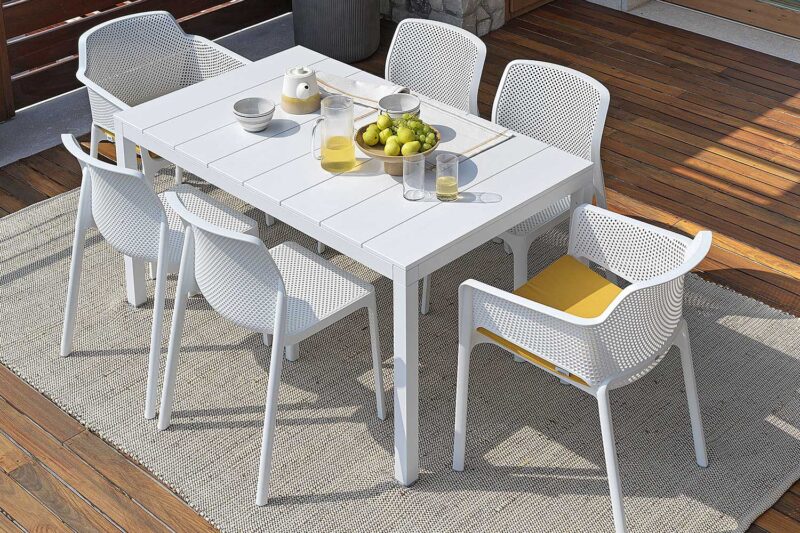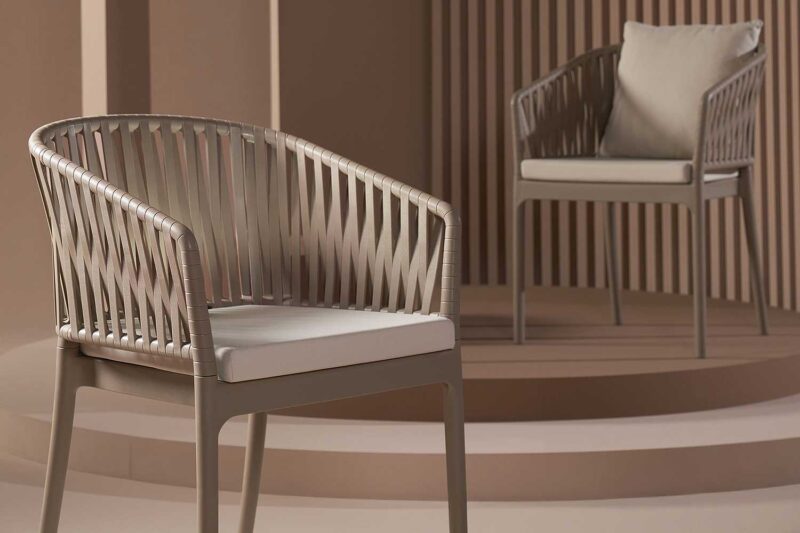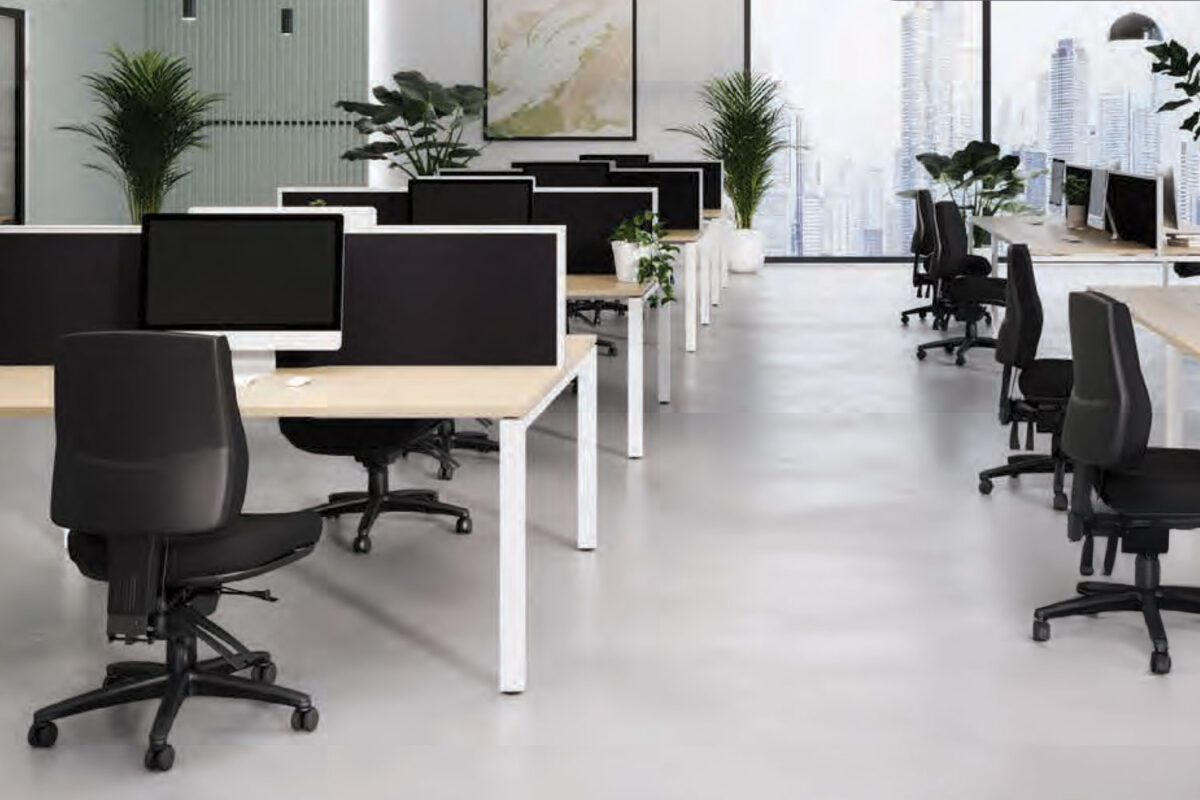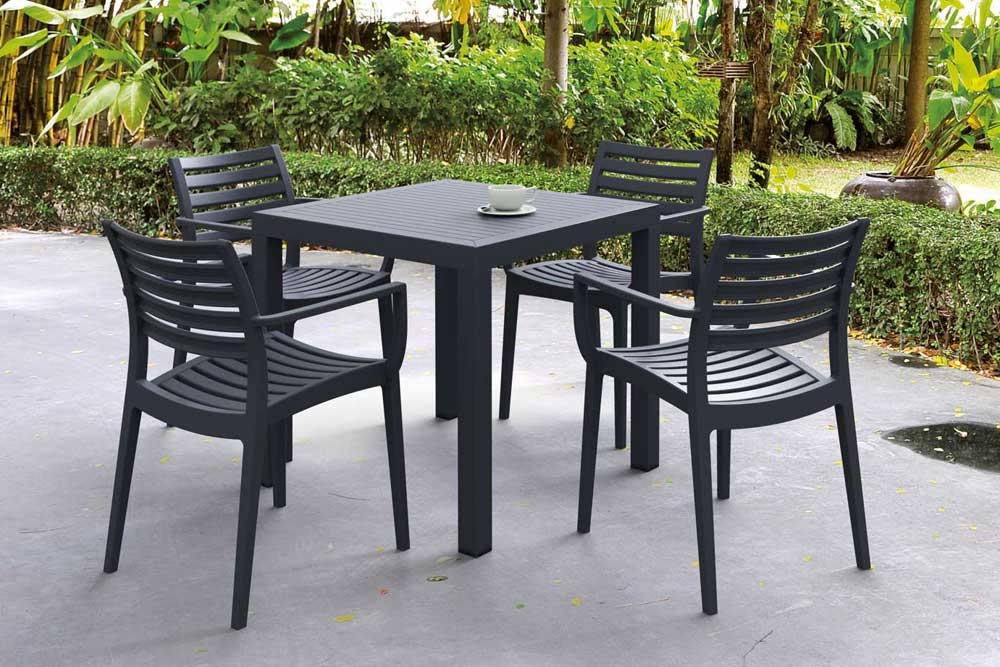Transforming Aged Care Environments: Exploring Trends in Interior Design for Enhanced Well-Being
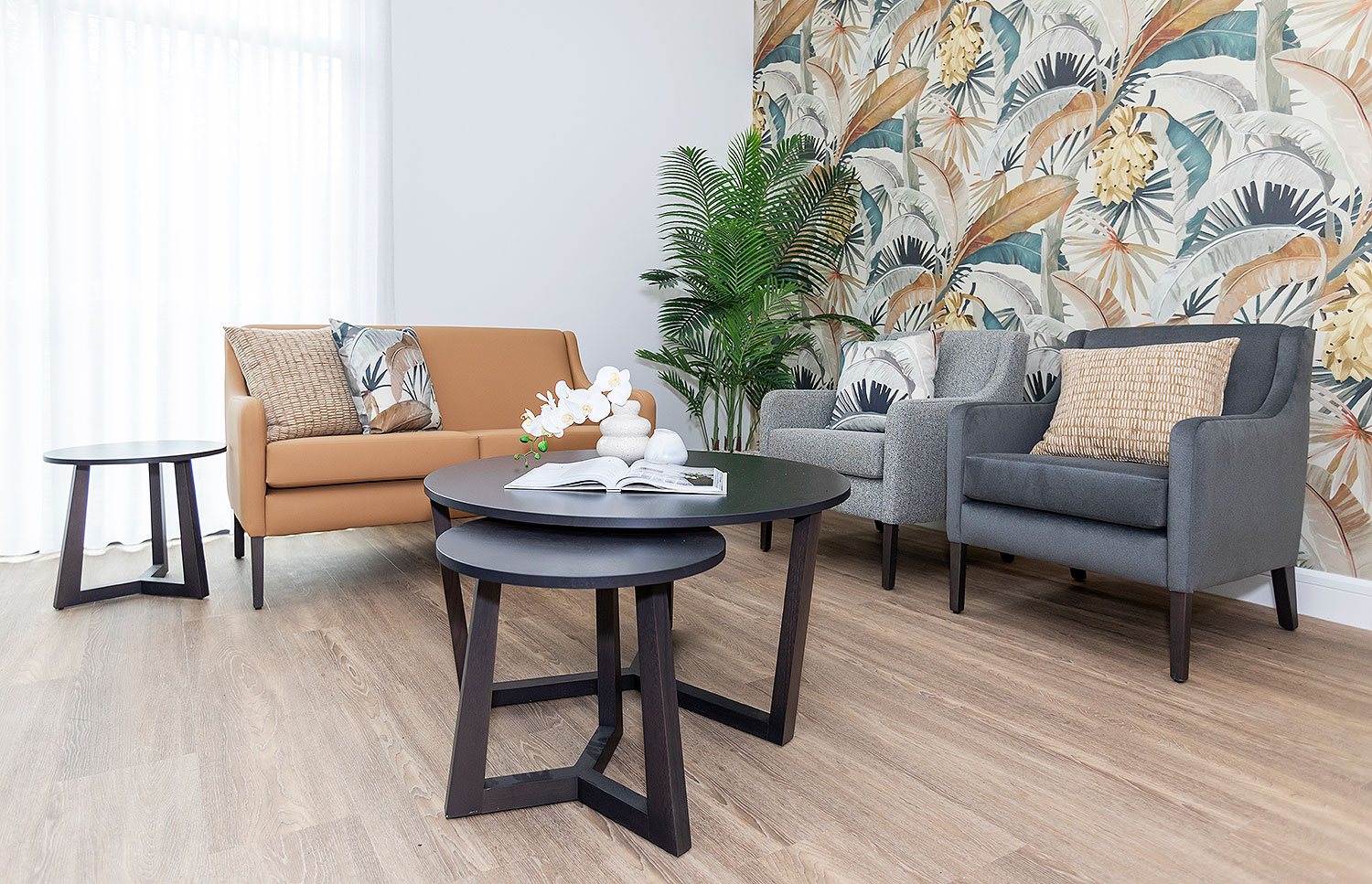
We’ve recently covered the rising trend of biophilic design making its way through aged care facilities. In addition to biophilic design, several other trends are emerging in interior design for aged care, focusing on creating environments that are not only functional but also supportive of residents’ physical, mental, and emotional well-being. Here are some noteworthy trends:
Sensory Design: Creating Holistic Environments
Sensory design is a dynamic and holistic approach that transcends traditional interior aesthetics, focusing on creating environments that actively engage residents through a rich tapestry of sensory experiences. In the context of aged care, where the well-being of residents is paramount, sensory design becomes a powerful tool for enhancing their physical, emotional, and cognitive aspects of life.
This holistic approach encompasses:
- Visual Stimulation: Thoughtful use of colors and artistic elements to create a vibrant and personalized atmosphere.
- Tactile Engagement: Incorporating textured fabrics and comfortable furnishings for a touch-friendly environment.
- Auditory Harmony: Utilizing calming sounds and effective noise management for a tranquil auditory experience.
- Aromatherapy Integration: Using scents strategically through diffusers and outdoor gardens for a delightful olfactory ambiance.
- Interactive Design: Designing spaces that encourage engaging activities and incorporate memory corners for nostalgia.
- Lighting Considerations: Maximizing natural light and implementing adjustable lighting systems for mood and well-being.
- Cultural Sensitivity: Respecting diverse cultural preferences to create inclusive and welcoming environments.
Sensory design enhances residents’ overall well-being, offering comfort, cognitive stimulation, and an improved quality of life.
Dementia-Friendly Design: Nurturing Comfort and Connection
Dementia-friendly design is a specialized approach that recognizes the unique needs and challenges faced by individuals living with dementia in aged care facilities. By creating environments that prioritize cognitive well-being, safety, and a sense of familiarity, this design philosophy aims to enhance the quality of life for residents and provide support for both individuals and caregivers.
Dementia-friendly design prioritizes the well-being of residents by:
- Clear Wayfinding: Implementing visible signage and memory cues for easy navigation.
- Safety Measures: Minimizing tripping hazards, installing handrails, and providing secure outdoor spaces.
- Homely Atmosphere: Creating a residential feel with comfortable furnishings and personalized spaces.
- Cognitive Stimulation: Incorporating memory stations and thematic spaces for engagement.
- Functional Design: Using adaptable furniture, high-contrast colors, and adequate lighting for accessibility.
- Support for Caregivers: Designing spaces for caregiver visibility and training.
- Calming Environments: Including sensory gardens and quiet areas for relaxation.
Dementia-friendly design fosters a supportive and meaningful environment for residents and caregivers alike, promoting comfort, autonomy, and a positive quality of life.
Adaptive and Inclusive Design: Creating Spaces for All Abilities
Adaptive and inclusive design is a transformative approach that ensures living spaces cater to the diverse needs of individuals with varying physical abilities and requirements. In aged care facilities, this design philosophy seeks to create environments that are accessible, supportive, and empower residents to navigate their surroundings with ease.
Adaptive and inclusive design in aged care focuses on:
- Universal Accessibility: Wide doorways, ramps, and adaptable furniture for easy mobility.
- Inclusive Furnishings: Varied seating options and customizable living spaces.
- Sensory Considerations: Incorporating sensory-friendly elements and pleasing tactile surfaces.
- Technology Integration: Smart solutions and assistive technologies for seamless living.
- Outdoor Accessibility: Gardens with mobility-friendly pathways and comfortable seating options.
- Inclusive Activities: Diverse programming and adaptable spaces for varied interests.
- Staff Training: Educating staff on awareness, sensitivity, and personalized care plans.
Adaptive and inclusive design ensures that all residents can enjoy a comfortable, supportive, and fulfilling living experience.
Residential Homeliness: Transforming Aged Care Environments into Welcoming Homes
Residential homeliness in aged care design is a departure from the traditional institutional setting, emphasizing the creation of living spaces that evoke the warmth, familiarity, and comfort of a home environment. This design philosophy recognizes the profound impact that a homely atmosphere can have on the well-being and quality of life of elderly residents.
Residential homeliness features:
- Comfortable Furnishings: Home-like furniture and personalized spaces.
- Warm Aesthetics: Neutral colors, familiar decor, and a cozy vibe.
- Communal Spaces: Living and dining areas for socialization.
- Human-Scale Design: Intimate layouts and cozy corners.
- Outdoor Appeal: Gardens with a homely touch.
- Personalized Services: Family-style meals and cultural sensitivity.
Creating a homely atmosphere ensures aged care feels welcoming and nurturing, enhancing residents’ well-being and satisfaction.
Technology Integration: Enhancing Lives Through Innovation
Technology integration in aged care represents a transformative approach that leverages innovative solutions to enhance the quality of life, safety, and overall well-being of residents. This comprehensive strategy involves the incorporation of cutting-edge technologies tailored to the unique needs of elderly individuals, caregivers, and the broader aged care community.
- Smart Living Solutions: Assistive devices for enhanced independence and smart home automation for convenience and accessibility.
- Telehealth and Remote Monitoring: Virtual consultations for remote medical care and wearable devices for continuous health monitoring.
- Communication and Connectivity: Digital platforms for resident-family-caregiver communication. Tablets and smart devices for entertainment and social interaction.
- Cognitive Support Technologies: Memory aids and cognitive support apps and virtual reality for immersive experiences.
- Emergency Response Systems: Wearable panic buttons and environmental sensors. Quick response to emergencies and falls.
- Learning and Engagement: Online learning platforms and digital games. Continuous education for residents and caregivers.
- Training and Support for Caregivers: Digital modules for caregiver training. Communication platforms for efficient teamwork.
- Integration of Robotics: Robotic assistance for tasks and companionship. Augmenting caregiving efforts with robotics.
- Data Security and Privacy Measures: Strict cybersecurity protocols to safeguard resident information.
- Adaptable Systems: Scalable solutions for evolving aged care needs. Future-proofing to integrate emerging technologies.
Technology integration in aged care enhances efficiency, connectivity, and person-centered care, creating a forward-looking and innovative care environment.
Art and Aesthetics: Elevating Environments through Creativity
Art and aesthetics play a pivotal role in shaping the physical and emotional atmosphere of aged care facilities. Beyond mere decoration, thoughtful incorporation of art and aesthetically pleasing elements contributes significantly to residents’ well-being, creating an environment that is not only visually appealing but also emotionally enriching.
Flexible Spaces: Adapting Environments for Dynamic Living
Flexible spaces in aged care represent a design philosophy that prioritizes adaptability, versatility, and the seamless transformation of physical environments to meet the evolving needs of residents. These spaces are intentionally designed to serve multiple purposes, fostering a dynamic and inclusive living experience.
Therapeutic Gardens: Nurturing Wellbeing Through Nature
Therapeutic gardens are thoughtfully designed outdoor spaces that prioritize the well-being of residents in aged care facilities. These gardens are not merely ornamental; they are intentionally created to offer a range of sensory and therapeutic benefits, contributing to the physical, mental, and emotional health of individuals.
Wellness and Fitness Spaces: Fostering Vibrant and Active Lifestyles
Wellness and fitness spaces in aged care facilities are pivotal components of a holistic approach to resident well-being. These spaces are thoughtfully designed to encourage physical activity, promote social engagement, and support overall health. From adaptable fitness equipment to tranquil wellness areas, these spaces cater to the diverse needs and preferences of residents.
Culturally Inclusive Design: Celebrating Diversity and Enhancing Wellbeing
Culturally inclusive design in aged care is a commitment to creating environments that honor and respect the diverse backgrounds, traditions, and preferences of residents. This approach recognizes that a one-size-fits-all model does not adequately meet the unique needs of an increasingly diverse aging population. Culturally inclusive design strives to create spaces that are not only physically accessible but also culturally sensitive, fostering a sense of belonging and enhancing the overall well-being of residents.
These trends collectively contribute to a shift towards person-centered care in aged care facility design, focusing on creating environments that promote autonomy, dignity, and a high quality of life for residents.
Australian Made Custom Furniture for Health and Aged Care
We make custom furniture in our Brisbane furniture manufacturing facility. Every piece is fit-for-purpose according to the needs of our clients.
More News
Transforming Aged Care Environments: Exploring Trends in Interior Design for Enhanced Well-Being

We’ve recently covered the rising trend of biophilic design making its way through aged care facilities. In addition to biophilic design, several other trends are emerging in interior design for aged care, focusing on creating environments that are not only functional but also supportive of residents’ physical, mental, and emotional well-being. Here are some noteworthy trends:
Sensory Design: Creating Holistic Environments
Sensory design is a dynamic and holistic approach that transcends traditional interior aesthetics, focusing on creating environments that actively engage residents through a rich tapestry of sensory experiences. In the context of aged care, where the well-being of residents is paramount, sensory design becomes a powerful tool for enhancing their physical, emotional, and cognitive aspects of life.
This holistic approach encompasses:
- Visual Stimulation: Thoughtful use of colors and artistic elements to create a vibrant and personalized atmosphere.
- Tactile Engagement: Incorporating textured fabrics and comfortable furnishings for a touch-friendly environment.
- Auditory Harmony: Utilizing calming sounds and effective noise management for a tranquil auditory experience.
- Aromatherapy Integration: Using scents strategically through diffusers and outdoor gardens for a delightful olfactory ambiance.
- Interactive Design: Designing spaces that encourage engaging activities and incorporate memory corners for nostalgia.
- Lighting Considerations: Maximizing natural light and implementing adjustable lighting systems for mood and well-being.
- Cultural Sensitivity: Respecting diverse cultural preferences to create inclusive and welcoming environments.
Sensory design enhances residents’ overall well-being, offering comfort, cognitive stimulation, and an improved quality of life.
Dementia-Friendly Design: Nurturing Comfort and Connection
Dementia-friendly design is a specialized approach that recognizes the unique needs and challenges faced by individuals living with dementia in aged care facilities. By creating environments that prioritize cognitive well-being, safety, and a sense of familiarity, this design philosophy aims to enhance the quality of life for residents and provide support for both individuals and caregivers.
Dementia-friendly design prioritizes the well-being of residents by:
- Clear Wayfinding: Implementing visible signage and memory cues for easy navigation.
- Safety Measures: Minimizing tripping hazards, installing handrails, and providing secure outdoor spaces.
- Homely Atmosphere: Creating a residential feel with comfortable furnishings and personalized spaces.
- Cognitive Stimulation: Incorporating memory stations and thematic spaces for engagement.
- Functional Design: Using adaptable furniture, high-contrast colors, and adequate lighting for accessibility.
- Support for Caregivers: Designing spaces for caregiver visibility and training.
- Calming Environments: Including sensory gardens and quiet areas for relaxation.
Dementia-friendly design fosters a supportive and meaningful environment for residents and caregivers alike, promoting comfort, autonomy, and a positive quality of life.
Adaptive and Inclusive Design: Creating Spaces for All Abilities
Adaptive and inclusive design is a transformative approach that ensures living spaces cater to the diverse needs of individuals with varying physical abilities and requirements. In aged care facilities, this design philosophy seeks to create environments that are accessible, supportive, and empower residents to navigate their surroundings with ease.
Adaptive and inclusive design in aged care focuses on:
- Universal Accessibility: Wide doorways, ramps, and adaptable furniture for easy mobility.
- Inclusive Furnishings: Varied seating options and customizable living spaces.
- Sensory Considerations: Incorporating sensory-friendly elements and pleasing tactile surfaces.
- Technology Integration: Smart solutions and assistive technologies for seamless living.
- Outdoor Accessibility: Gardens with mobility-friendly pathways and comfortable seating options.
- Inclusive Activities: Diverse programming and adaptable spaces for varied interests.
- Staff Training: Educating staff on awareness, sensitivity, and personalized care plans.
Adaptive and inclusive design ensures that all residents can enjoy a comfortable, supportive, and fulfilling living experience.
Residential Homeliness: Transforming Aged Care Environments into Welcoming Homes
Residential homeliness in aged care design is a departure from the traditional institutional setting, emphasizing the creation of living spaces that evoke the warmth, familiarity, and comfort of a home environment. This design philosophy recognizes the profound impact that a homely atmosphere can have on the well-being and quality of life of elderly residents.
Residential homeliness features:
- Comfortable Furnishings: Home-like furniture and personalized spaces.
- Warm Aesthetics: Neutral colors, familiar decor, and a cozy vibe.
- Communal Spaces: Living and dining areas for socialization.
- Human-Scale Design: Intimate layouts and cozy corners.
- Outdoor Appeal: Gardens with a homely touch.
- Personalized Services: Family-style meals and cultural sensitivity.
Creating a homely atmosphere ensures aged care feels welcoming and nurturing, enhancing residents’ well-being and satisfaction.
Technology Integration: Enhancing Lives Through Innovation
Technology integration in aged care represents a transformative approach that leverages innovative solutions to enhance the quality of life, safety, and overall well-being of residents. This comprehensive strategy involves the incorporation of cutting-edge technologies tailored to the unique needs of elderly individuals, caregivers, and the broader aged care community.
- Smart Living Solutions: Assistive devices for enhanced independence and smart home automation for convenience and accessibility.
- Telehealth and Remote Monitoring: Virtual consultations for remote medical care and wearable devices for continuous health monitoring.
- Communication and Connectivity: Digital platforms for resident-family-caregiver communication. Tablets and smart devices for entertainment and social interaction.
- Cognitive Support Technologies: Memory aids and cognitive support apps and virtual reality for immersive experiences.
- Emergency Response Systems: Wearable panic buttons and environmental sensors. Quick response to emergencies and falls.
- Learning and Engagement: Online learning platforms and digital games. Continuous education for residents and caregivers.
- Training and Support for Caregivers: Digital modules for caregiver training. Communication platforms for efficient teamwork.
- Integration of Robotics: Robotic assistance for tasks and companionship. Augmenting caregiving efforts with robotics.
- Data Security and Privacy Measures: Strict cybersecurity protocols to safeguard resident information.
- Adaptable Systems: Scalable solutions for evolving aged care needs. Future-proofing to integrate emerging technologies.
Technology integration in aged care enhances efficiency, connectivity, and person-centered care, creating a forward-looking and innovative care environment.
Art and Aesthetics: Elevating Environments through Creativity
Art and aesthetics play a pivotal role in shaping the physical and emotional atmosphere of aged care facilities. Beyond mere decoration, thoughtful incorporation of art and aesthetically pleasing elements contributes significantly to residents’ well-being, creating an environment that is not only visually appealing but also emotionally enriching.
Flexible Spaces: Adapting Environments for Dynamic Living
Flexible spaces in aged care represent a design philosophy that prioritizes adaptability, versatility, and the seamless transformation of physical environments to meet the evolving needs of residents. These spaces are intentionally designed to serve multiple purposes, fostering a dynamic and inclusive living experience.
Therapeutic Gardens: Nurturing Wellbeing Through Nature
Therapeutic gardens are thoughtfully designed outdoor spaces that prioritize the well-being of residents in aged care facilities. These gardens are not merely ornamental; they are intentionally created to offer a range of sensory and therapeutic benefits, contributing to the physical, mental, and emotional health of individuals.
Wellness and Fitness Spaces: Fostering Vibrant and Active Lifestyles
Wellness and fitness spaces in aged care facilities are pivotal components of a holistic approach to resident well-being. These spaces are thoughtfully designed to encourage physical activity, promote social engagement, and support overall health. From adaptable fitness equipment to tranquil wellness areas, these spaces cater to the diverse needs and preferences of residents.
Culturally Inclusive Design: Celebrating Diversity and Enhancing Wellbeing
Culturally inclusive design in aged care is a commitment to creating environments that honor and respect the diverse backgrounds, traditions, and preferences of residents. This approach recognizes that a one-size-fits-all model does not adequately meet the unique needs of an increasingly diverse aging population. Culturally inclusive design strives to create spaces that are not only physically accessible but also culturally sensitive, fostering a sense of belonging and enhancing the overall well-being of residents.
These trends collectively contribute to a shift towards person-centered care in aged care facility design, focusing on creating environments that promote autonomy, dignity, and a high quality of life for residents.
Australian Made Custom Furniture for Health and Aged Care
We make custom furniture in our Brisbane furniture manufacturing facility. Every piece is fit-for-purpose according to the needs of our clients.
Discover the FHG Look Book: Your Source of Inspiration for Quality Australian-Made Commercial Furniture
- Quality Craftsmanship: See why we’ve been a trusted partner for over 25 years.
- Local Excellence: Learn how our Brisbane team ensures the highest standards.
- Inspiration and Ideas: Find innovative furniture solutions for any environment.
Don’t miss the opportunity to transform your commercial space with FHG’s expertly crafted furniture. Download the FHG Look Book today and start your journey towards exceptional design and quality.

